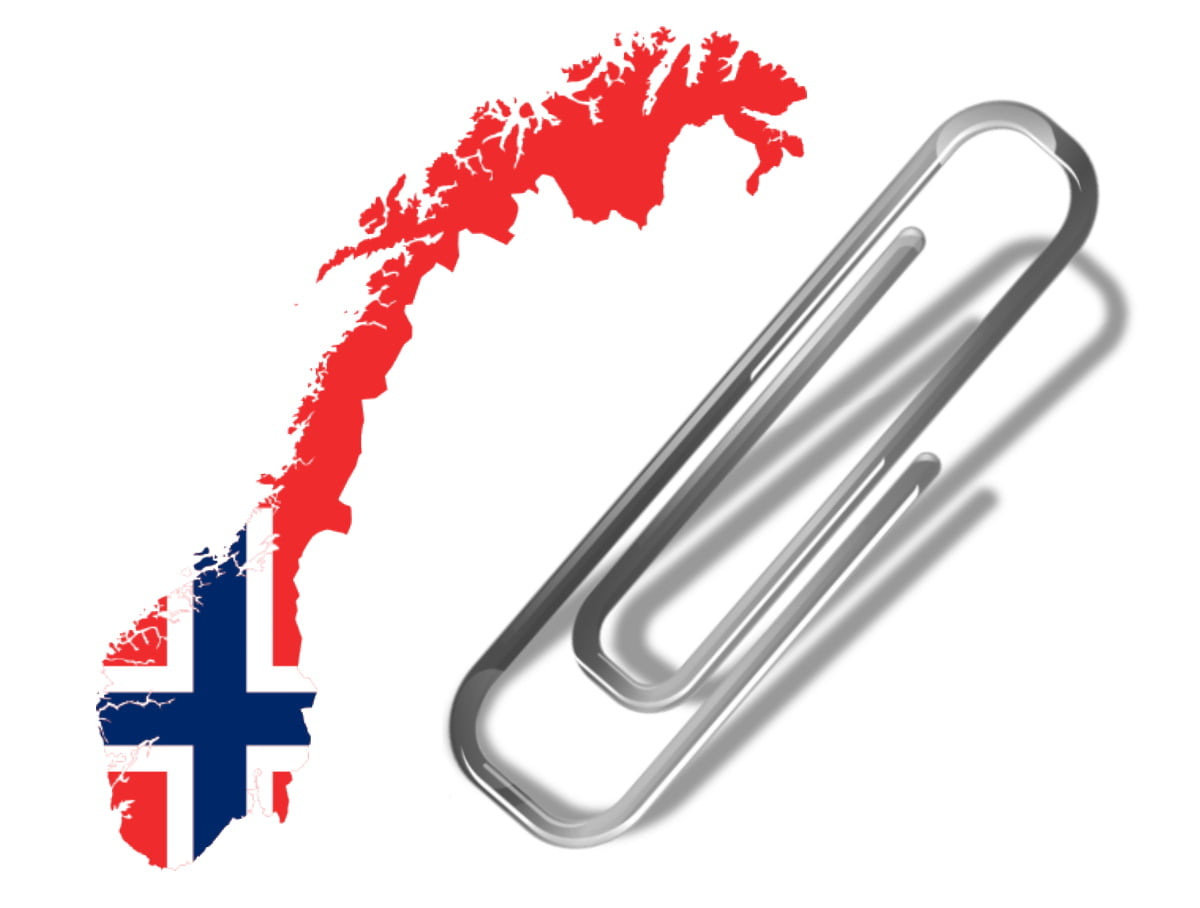It is generally accepted that the birthplace of the paper clip is Norway, where they even erected a monument to a local native. We checked whether the stationery product was actually born in this northern country.
Here is the information you can find on the Internet: “In Norway, in Oslo, there is a three-meter high monument to a paper clip. For residents of Norway, a paper clip generally has a deep symbolic meaning, which is associated with the heroic history of the Second World War. In 1940, when the Nazis came to power in the country, local residents were prohibited from wearing buttons and badges with the initials of the exiled Norwegian King Haakon VII. Then the Norwegians, seeing the cherished initials in the outline of an ordinary paper clip, began to wear them on their clothes as a symbol of national unity and resistance. The feat of the citizens was not forgotten, as were the merits of the inventor of the paper clip, the Norwegian Johan Voler (invented the paper clip in 1899). This is how a figure of a giant paper clip appeared in Oslo with the inscription: “You hold up to 30 sheets. Keep it up!”
This text is distributed by resources such as "Tourist", "Your sport", "Multilesson", "Russian Norway". Stephen Fry also reports in his "The Book of Universal Errors".
Let's start with the monument. Indeed, the most famous (but not the largest) is in the Urals There is and larger) in the world, a monument to a paper clip is located on the campus of the School of Management in Oslo, where it moved after installation in 1989 in Sandvik, suburb of the capital:

Indeed, during the Second World War, the inhabitants of Norway, in silent protest started wear ordinary paper clips on clothes - however, they had nothing to do with the initials of King Haakon VII and symbolized the unity and cohesion of the nation. This was done mainly by young and desperate people, namely students. Hence the installation of a giant paper clip on campus.
The identity of Johan Wohler is also beyond doubt. From 1892 until his death in 1920, Wohler worked a clerk not just anywhere, but in the Patent Office. Indeed, Wohler once patented a paper clip. But there are several important circumstances.
1. Back in 1867, American Samuel B. Fay patented an early version of a paperclip - however, originally conceived for attaching labels and tags to clothing, but still now considered the first prototype of a modern paper clip:

You can also highlight patent Erlman Wright, designed in 1877. In total, it is believed that before 1899, about 50 patents were issued for various paperclip designs that differed in one way or another from the modern model. Images of many of them preserved.
2. Patent legislation in Norway was still lame at that time, so Wohler turned to Germany and the USA. Application for American patent #675761 was issued, according to the database, only on January 2, 1901 and approved in June. Wohler contacted the German bureau a little earlier, on November 12, 1899, however patent was issued in the same June 1901.
3. Wohler's paperclip, as can be seen from the illustration to the patent, was different from the familiar classic version of the paperclip, which is depicted on a monument in Norway. And the point is not so much in the strictly rectangular shape, but in the absence of a second loop, duplicating the outer contour almost along the entire perimeter. It is thanks to this that a modern paper clip does not fly off the paper, does not deform or pierce it. But Voler's invention was impractical. If we consider it a prototype of a modern paperclip, then with equal success we can do this in relation to many other options that were invented and described earlier.

4. Wahler did not know, and perhaps could not have known, that for some time now the British company Gem Manufacturing Ltd. produced a limited edition of the well-known paper clip. In 1892 the product started producing and in the USA, as evidenced by advertising that appeared 30 years later. Also pay attention to newspaper advertisements from 1893 and 1894, long before Wohler’s invention:

Finally, in 1899, American William Middlebrook patented a machine for making Gem type paper clips, and in 1904 the Cushman & Denison company registered the trademark of the same name. Note that both Middlebrook's application (April 27) and its execution (November 7) took place before Johan Wohler submitted the first of his two applications. It should also be noted that the design of the Gem paperclip, judging by the drawings, has not changed at all in over 100 years:

5. The Wohler paperclip was never mass produced. In the 1920s in German archives discovered his patent application. When information reached the Norwegians, this was the beginning of the birth of a local myth about the inventor of the paper clip. During the period of rising national consciousness (after World War II), this story rhymed well with the well-known saga of local students wearing paper clips on their clothes. Information about Voler as the inventor of the paper clip ended up in the local encyclopedia and through it spread around the world.
Thus, Johan Wohler was only one of many people who filed a patent for a paper clip. However, he was not ahead of his colleagues, and his paperclip design did not match the most popular design, immortalized on the monument in Oslo. But on the memorial stone dedicated to Voler we can see the same original design:

Mostly not true
Read on topic:
1. The paperclip was not invented by Johan Vaaler.
2. History of the Paper Clip.
If you find a spelling or grammatical error, please let us know by highlighting the error text and clicking Ctrl+Enter.






